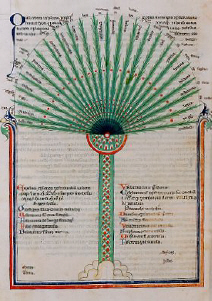Is it any explanation to say that desire is vested in a Faculty-of-desire and anger in the Irascible-Faculty and, collectively, that all tendency is seated in the Appetitive-Faculty? Such a statement of the facts does not help towards making the affections common to the Couplement; they might still be seated either in the Soul alone or in the body alone. On the one hand if the appetite is to be stirred, as in the carnal passion, there must be a heating of the blood and the bile, a well-defined state of the body; on the other hand, the impulse towards The Good cannot be a joint affection, but, like certain others too, it would belong necessarily to the Soul alone. Enneads: I. I. 5
Faculty-of-desire
- Guthrie: Tratado 53,10 (I, 1, 10) — Distinções entre «Nós» e «Homem Real»
- Guthrie: Tratado 53,11 (I, 1, 11) — Princípio superior nem sempre usado
- Guthrie: Tratado 53,12 (I, 1, 12) — A alma tanto impassível como punível
- Guthrie: Tratado 53,13 (I, 1, 13) — A relação entre o «nós» e a alma
- Guthrie: Tratado 53,2 (I, 1, 2) — A alma como um agregado composto
- Guthrie: Tratado 53,3 (I, 1, 3) — A alma usa o corpo como instrumento
- Guthrie: Tratado 53,4 (I, 1, 4) — Consequências da mistura de alma e corpo
- Guthrie: Tratado 53,5 (I, 1, 5) — O organismo vivo
- Guthrie: Tratado 53,6 (I, 1, 6) — Alma e corpo se unindo forma um agregado individual
- Guthrie: Tratado 53,7 (I, 1, 7) — Alma-Luz forma a natureza animal
